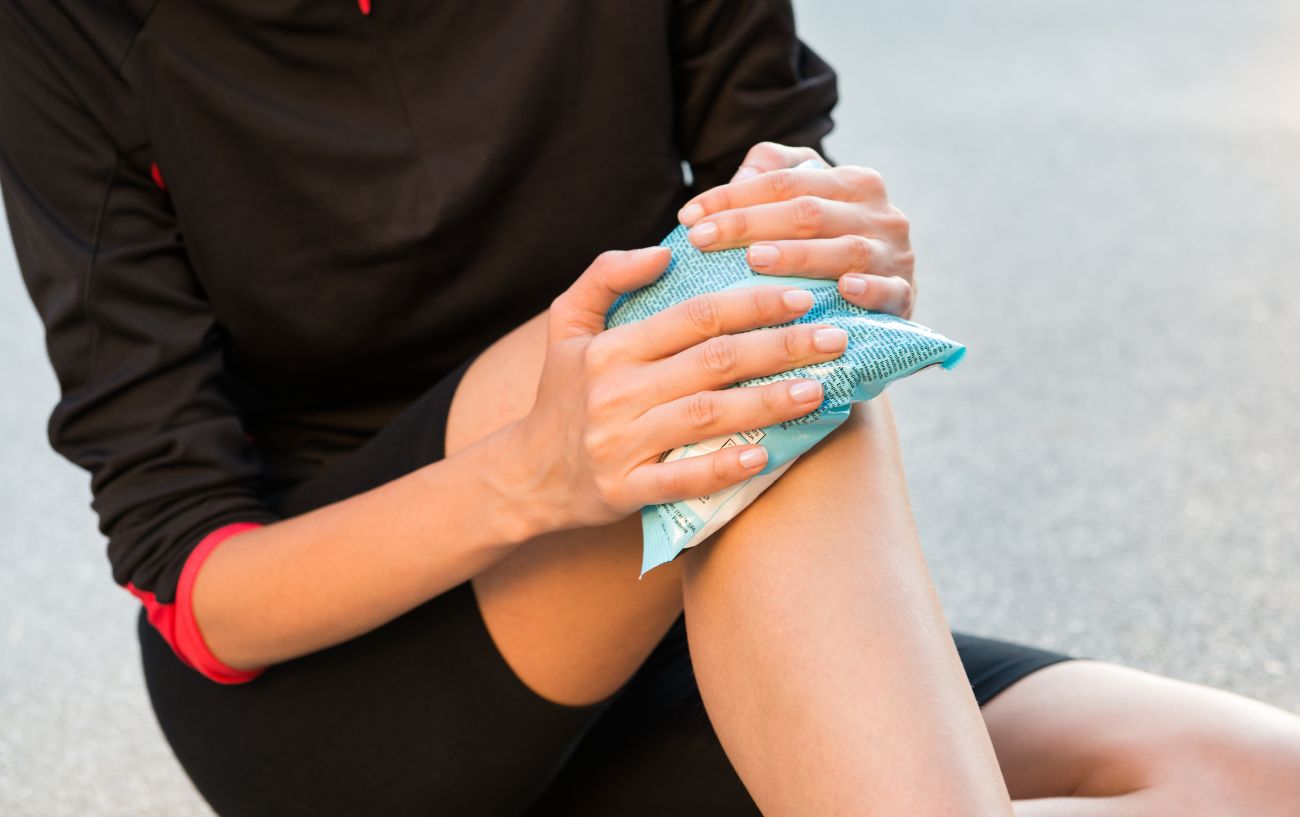Running is riddled with loads and benefits, bringing us happiness and fulfillment in our daily lives. However, a pesky, stubborn, often recurring injury can occasionally pop up, leaving us frustrated, in pain, and perhaps even needing to sideline our training: Plantar Fasciitis.
This nagging foot condition affects a lot of runners, disrupting training schedules and causing discomfort that can sideline even the most dedicated athletes.
In this guide, we delve into the world of plantar fasciitis for runners, explore its causes, discuss how it manifests in running, and, most importantly, provide actionable advice on effective treatment and prevention strategies.
Join us as we uncover the nuances of plantar fasciitis for runners and equip you with the knowledge to overcome this common running injury, ensuring that your running journey remains as smooth and enjoyable as possible.

What is Plantar Fasciitis?
Plantar fasciitis refers to inflammation in the bands of connective tissue that run from your toes to your heel.
This band is very thick and supports the arch of your foot, allowing you to walk and run. However, when the fascia becomes inflamed, it causes pain.
What are the Symptoms of Plantar Fasciitis?
- Heel pain: This is the most common symptom of plantar fasciitis for runners. It is usually a sharp or stabbing pain that is at its worst in the morning when one first steps out of bed.
- Foot arch pain: Some runners also feel pain along the arch of the foot, from the heel toward the ball of the foot.
- Tenderness: The entire bottom of the foot can be tender to the touch.
- Stiffness: Feet will often feel stiff when you first get out of bed in the morning or after a period of inactivity, and it takes a while to warm up. Pain may diminish when more active. You may also have a lack of flexibility due to tight calf muscles.
Ironically, the pain from Plantar Fasciitis may not bother you much when you are warmed up and running; however, it can flare up quite a bit after the activity.
What Causes Plantar Fasciitis?
Plantar fasciitis is caused by putting too much pressure on the fascia.
If you increase your volume and intensity too quickly, you risk overtraining and overloading your body. The repetitive high impact on your feet can cause Plantar Fasciitis.
Following a good training plan is very important, as it will gradually increase your total mileage in manageable chunks. Getting help from a certified running coach is also incredibly helpful as they can create the perfect plan for you and lower your risk of there overuse injuries.
You are more likely to develop plantar fasciitis if you have issues with your foot biomechanics, such as flat feet or extra-high arches.
Being overweight is also a risk factor.
You may also develop plantar fasciitis if you wear old shoes or those with poor support.
Tight Achilles tendons and calf muscles can also lead to plantar fasciitis.

How Can I Prevent Plantar Fasciitis As A Runner?
#1: Follow A Training Plan
The best way to prevent plantar fasciitis for runners is to avoid over-loading your mileage when you start running.
Be mindful of how quickly you increase your mileage. Follow the 10% rule and only increase a maximum of 10% more miles or time every week.
This can be achieved by following a well-thought-out training plan specific to your needs and fitness levels.
#2: Strengthen And Stretch
Add strength training workouts to your training plan. Strengthen your legs and feet, and incorporate balance exercises for improved stability.
You also want to stretch out those calves and legs after a run to improve flexibility and help reduce tension.
Also, be sure to warm up and cool down before and after your runs.
#3: Choose Good Running Shoes
Look for shoes that provide excellent support for your specific foot and gait, whether you have a case of overpronation or heel striking, etc. You may want shoes with more cushioning for heightened comfort like Hokas.
We have a great guide to help you choose which running shoes are best for you here.
In addition to this, be mindful of the surfaces you run on and how you run. Running on very hard surfaces and up and down hills can aggravate your plantar fascia.

What Is The Fastest Way To Cure Plantar Fasciitis?
Rest, of course, is the best treatment for plantar fasciitis.
This can be very difficult to do if you’re a runner, but taking a few days off can make a big difference in how quickly you heal. Try some no-impact cross-training, such as swimming, as it won’t flare up your symptoms and allow you to heal.
To manage the pain, you can also take over-the-counter anti-inflammatory pain relievers and ice the area where the foot pain is three times a day.
Physical therapy is the best way to treat plantar fasciitis. A physical therapist can put together a specific plan for your plantar fasciitis pain and discuss the best treatment options for you.
Stretching exercises and strengthening exercises for your foot, Achilles tendon, and lower leg muscles can help treat and prevent future cases of plantar fasciitis.
Using some type of pressure or massage on your heel can also treat plantar fasciitis.
This can be as simple as rolling a hard ball, like a golf ball or a lacrosse ball, or as complex as using shockwave therapy to target the injured tissues.
Both of these treatments work to loosen the tendons and ligaments and decrease pain.
Here are some great PF stretches, courtesy of Jodi Bar at the Cleveland Clinic:

If your plantar fasciitis doesn’t seem to heal, your doctor can administer a steroid injection.
They inject the medicine into the most painful part of your heel. It will reduce inflammation for several months and help relieve your pain for about a month!
In extreme cases, your doctor may recommend doing the Tenex procedure. In the Tenex procedure, your doctor makes a small cut in your heel and then uses ultrasound waves to find and remove scar tissue in your heel.
Your doctor may also recommend surgery. In plantar fasciitis surgery, the plantar fascia is detached from the heel bone. After this, you may need to wear a boot or brace to keep the area stable.

Can Runners Run With Plantar Fasciitis?
You are not alone if you have been diagnosed with plantar fasciitis and want to keep running.
There are a few ways to speed up the healing process and ensure that you aren’t putting too much pressure on your fascia when you aren’t running.
First, you can invest in special arch supports, insoles, or custom orthotics that go in your shoes.
These can help correct your form and provide support to your arch and specific foot structure. It will help relieve the pain you feel after your run.
You can also use a night splint or brace while you sleep.
This will stretch your calf and lengthen both your Achilles tendon and plantar fascia. mNight splints go a long way in relieving pain, especially that painful first steps filled with sharp pain in the morning!
Finally, be sure to stretch your Achilles tendon and plantar fascia regularly. Stretching your calf muscles also helps. This will help relieve pain and keep you from aggravating your injury. Try to stretch at least three times a day.

How to Tape Your Feet for Plantar Fasciitis
Another way to keep running is to use kinesiology tape.
It can prevent pain, but please note that it won’t address the underlying cause of the pain.
- You’ll need one long strip and two short ones.
- Begin by placing one end of the long piece of the tape on the ball of your foot.
- Anchor it there and lay it along the middle of your foot, over your heel, and up your Achilles tendon.
- Next, take the short piece and place it on the outside of your foot so that the top of the piece lays over the painful area of your heel.
- Stretch it across your foot until it reaches the inside of your ankle.
- Then, take the second piece and place it above this area.
- The bottom of this piece should also be over the area of pain.

Plantar fasciitis for runners is a painful and stubborn condition, but you can heal from it.
If you start to feel pain in your heel after your runs or first thing in the morning, then take a break from running.
You can substitute other low-impact forms of cardio, like swimming and cycling, while you heal up.
Be sure to tape, stretch, wear braces, and take medication as needed. If you feel your condition is worsening and that it seems to be more than a mild case, seeking out a physical therapist could be your next step.
With a little time and care, you’ll be free of plantar fasciitis! For step-by-step instructions and videos to best calf stretches, check out this next guide:












